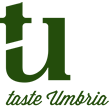- Eat & Drink
- Umbrian flavours
- Saffron
Starting from the XIII century the production of saffron has affected Umbria, as the Spoletino scholar Pierfrancesco Giustolo specifies in 1499 and composes a didactic poem in Latin hexameters, "De croci cultu" (published posthumously in 1510), in which he meticulously describes the cultivation practice of saffron, distinguishing the areas most characterized by cultivation.
There are numerous provisions concerning "the crocus or zaffarame" contained in many Umbrian municipal statutes since the 13th century and this documents a widespread diffusion on the regional soil [Giacché, 2007].
The oldest reference to the saffron trade in Umbria belongs to the archival documentation of the monastery of S. Maria di Valdiponte, known as the Abbey of Montelabate, near Perugia, in whose 13th century accounting books the purchase of a "uncia" is registered çafarani ", dated 2 February 1226, at the price of 4 soldi and 6 denari.
However, two particularly significant areas emerge from the production point of view: the Spoletino, the Folignate and the Valnerina, on the one hand, and the Pievese, Trasimeno and Orvietano districts on the other.
The good experiences of cultivation have led to the establishment of specific Producer Associations, which in Cascia, Città della Pieve and Spoleto have assumed the connotation of significant and consolidated models thanks to the support of the municipal administrations of the Umbria Region, of ARUSIA and the Mountain Communities and BIM of the territories concerned that saw in the crop an innovative element of the usual agricultural production, with interesting economic potential.
Currently the areas in Umbria to be famous for the production of saffron are Cascia and Città della Pieve, but also Gubbio and Spoleto.
The production of saffron in Città della Pieve has its origins in the thirteenth century: among the oldest evidence that of 1279, in the Statute of Perugia where it was forbidden in the entire countryside and in Città della Pieve, the sowing of piata by foreigners. Its preciousness was linked to the dyeing of precious fabrics. Today, the consortium "Il croco di Pietro Perugino - Saffron of Città della Pieve" is made up of 30 members producing saffron that is sold exclusively in wires to guarantee its authenticity.
In Cascia, after a great diffusion from the '200 to the' 500 also due to its therapeutic properties, the production of saffron was reintroduced in 1999. In 2003 "Association of the Saffron of Cascia - Pure saffron of Umbria" was born about 23 producers and that involves the whole territory of Valnerina. Every year the minimum price of the product is fixed on November 25, on the occasion of the feast of Santa Caterina di Alessandria, following an ancient medieval tradition. If you are in Cascia at the end of October, do not miss the chance to visit the Mostra Mercato dello Zafferano di Cascia.
Sixteen producers of Spoletino are instead gathered in the "Saffron of the Duchy" Association which promotes the consumption of "red gold" with events, festivals and exhibitions in Italy and abroad. Search in one of the many restaurants in Spoleto the maltagliati with saffron and chickpeas, a unique and delicious dish.
The Zafferano Association of Gubbio, on the other hand, is born from the intention of some young people to recover and make known the production of the ancient spice, where some species of Crocus sativus are born spontaneously. In Gubbio taste the Rabbit with Saffron, a dish with a strong flavor, but sweetened by the delicacy of white meat.
If you want to learn more about production, how to harvest and taste saffron-based products, we suggest you to contact the consortia that will be able to orientate you among the many farms in the area to organize guided tours and tastings.
In the "saffron towns" it is also possible to buy pure saffron and saffron-based products in the many shops selling typical products.

